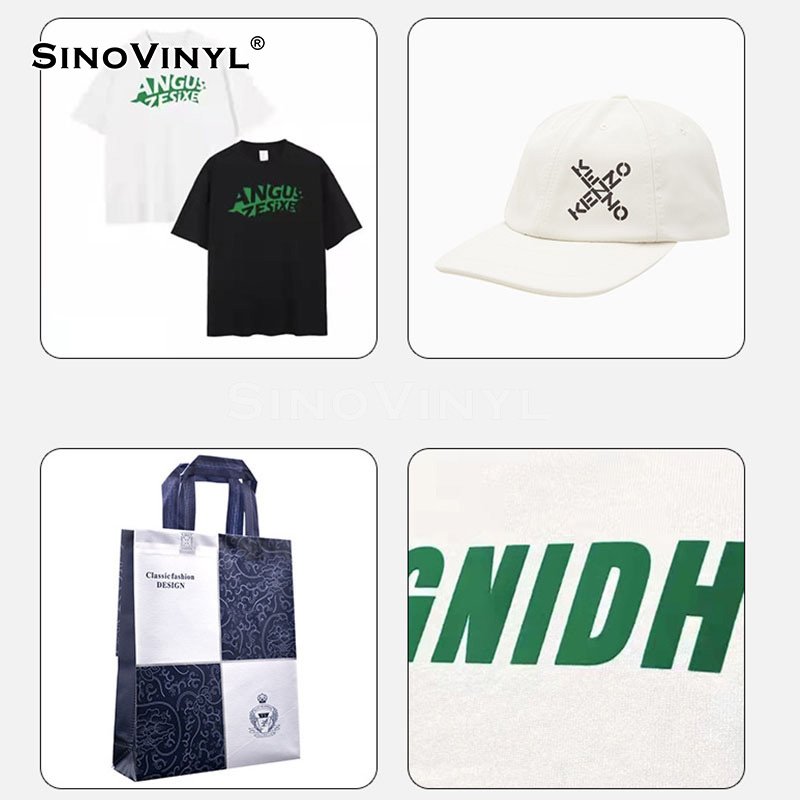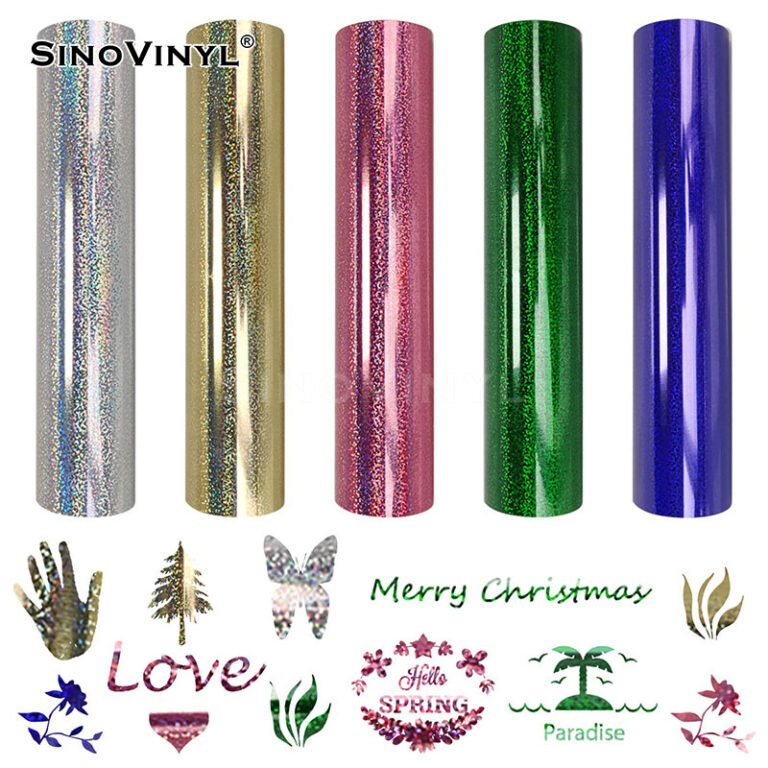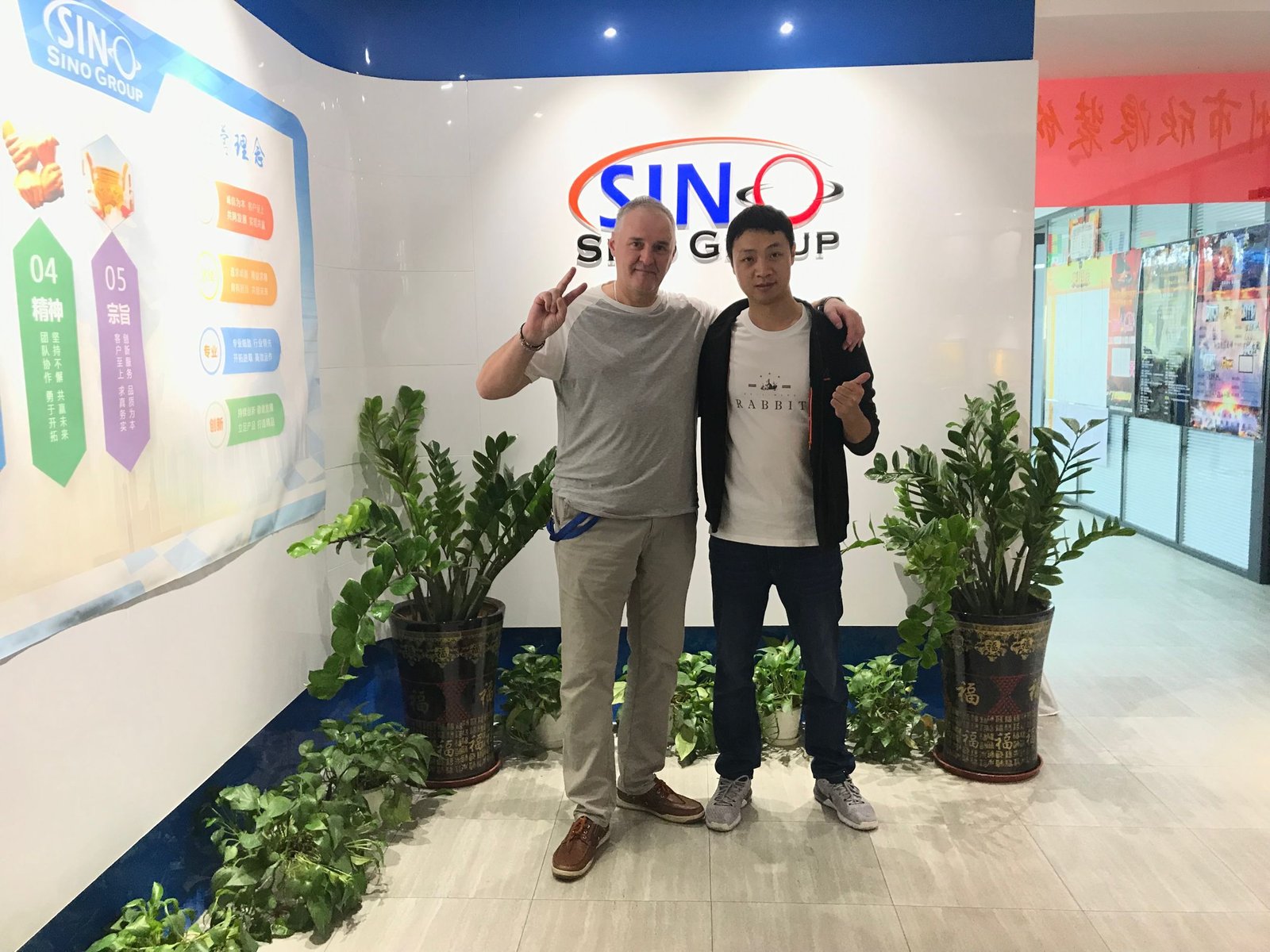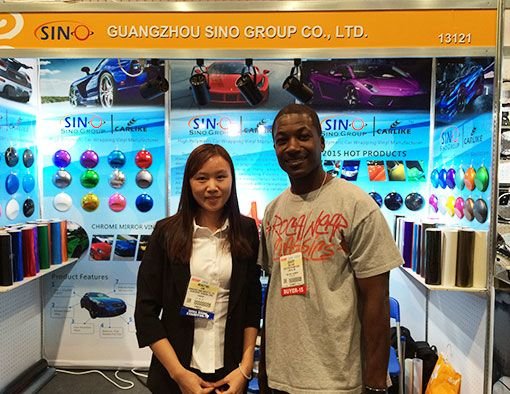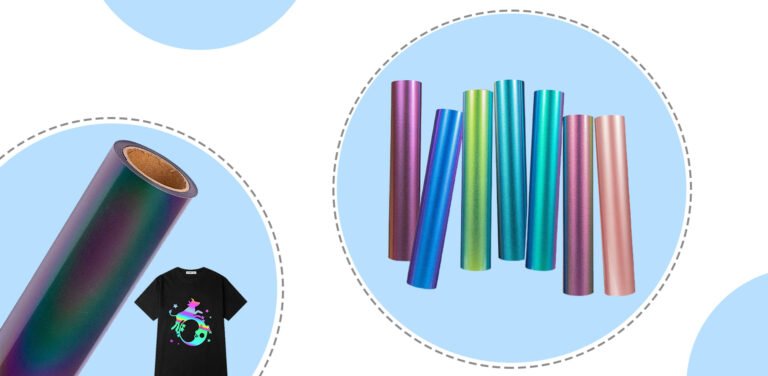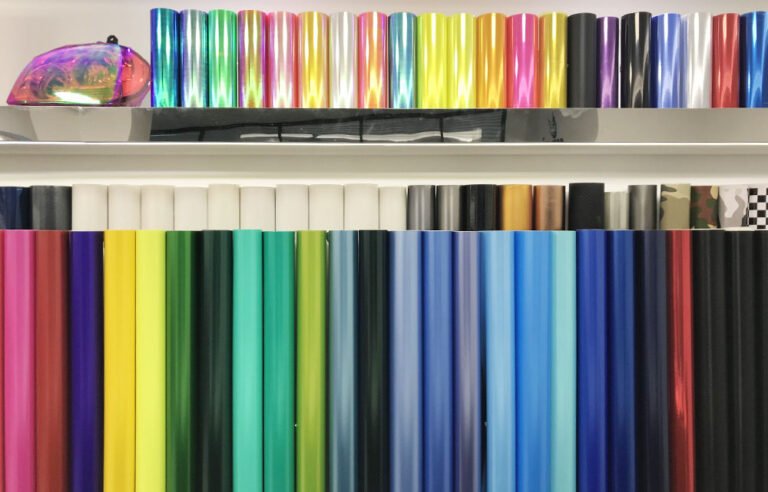What factors should be considered when selecting the best heat transfer vinyl for a specific project?
1. Type of Fabric and Material
Different fabrics and materials have varying levels of heat resistance and texture. Some heat transfer vinyl may work better on certain fabrics than others due to compatibility and adhesion properties.
2. Adhesive Quality
The adhesive quality of the heat transfer vinyl is crucial. It should adhere well to the chosen fabric without peeling or lifting, even after washing and wear.
3. Durability and Longevity
Consider the intended use and longevity of the project. If you’re creating items like sports jerseys or work uniforms that will undergo frequent washing and heavy use, you’ll want a heat transfer vinyl that’s durable and able to withstand repeated cycles in the washing machine without fading or cracking.
4. Ease of Application
Some heat transfer vinyls are easier to work with than others. If you’re new to using heat transfer vinyl, you might want to choose a product that’s user-friendly and forgiving in terms of application.
5. Color Options
Heat transfer vinyl is available in a wide range of colors, including metallic, glitter, neon, and more.
6. Cutting and Weeding Ease
When working with heat transfer vinyl, you’ll need to cut and weed the excess material before application. Some vinyl types are easier to cut and weed due to their thickness and adhesive strength. Make sure the vinyl you choose is suitable for your cutting machine and weeding preferences.
7. Layering Capabilities
If you plan to create multi-color or layered designs, ensure that the heat transfer vinyl you choose is compatible with layering. Some vinyl types may not adhere well when layered on top of each other.
8. Heat Application Requirements
Different heat transfer vinyls require specific temperature and pressure settings during the application process. Make sure the vinyl you choose is compatible with the heat press or iron you have access to. Also, consider the type of heat transfer vinyl—some require cold peeling, while others need to be peeled when hot.
9. Finish and Texture
Heat transfer vinyl comes in various finishes, such as matte, glossy, semi-gloss, and more. Consider the desired aesthetic of your project and choose a vinyl with the appropriate finish.
10. Project Size and Quantity
The size and quantity of your project can impact the type of heat transfer vinyl you choose. Some vinyls come in rolls, sheets, or by the yard, so make sure you select a size that meets your project’s requirements.
11. Budget
Price can also be a determining factor. High-quality heat transfer vinyl might cost more, but it often yields better results. Consider your budget and balance it with the quality you need for your project.


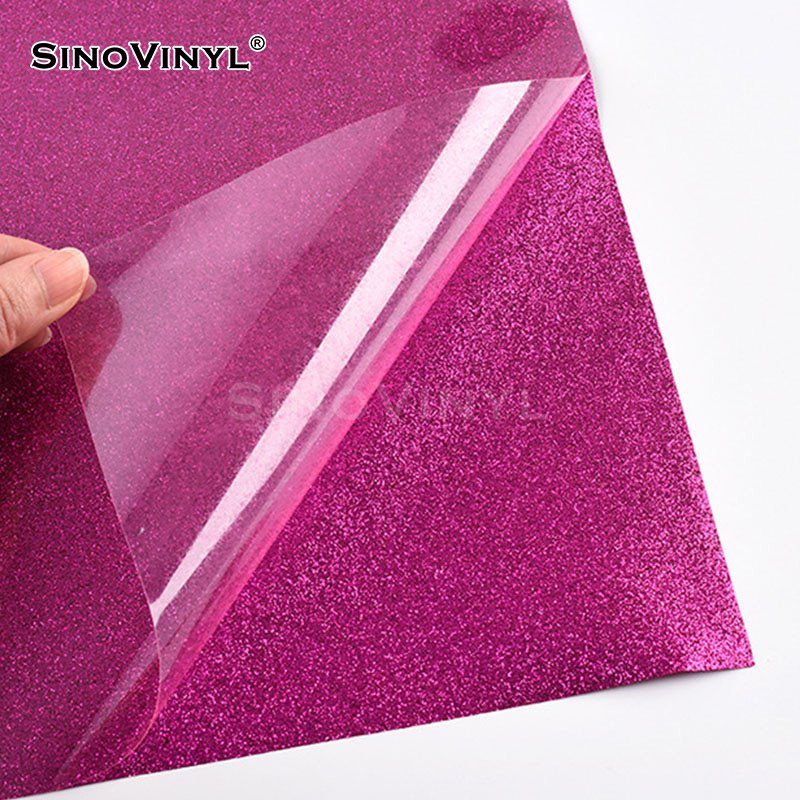
Are there different types of heat transfer vinyl finishes, and how do they impact the design outcome?
Yes, there are different types of heat transfer vinyl finishes, each with its own characteristics that can impact the design outcome. The finish of the heat transfer vinyl refers to the texture, appearance, and sometimes special effects that the vinyl imparts to the design. Here are some common types of best heat transfer vinyl finishes and how they can impact the design outcome:
1. Matte Finish:
– Matte finish heat transfer vinyl has a smooth, non-shiny surface.
– It provides a more subdued and contemporary look.
– Ideal for designs that require a modern or understated appearance.
– Reduces glare and reflection, making it easy to view designs from different angles.
2. Glossy Finish:
– Glossy finish heat transfer vinyl has a shiny and reflective surface.
– Offers a vibrant and attention-grabbing appearance.
– Suitable for designs that require a bold and vibrant look.
– Adds a polished and professional touch to the design.
3. Metallic Finish:
– Metallic finish heat transfer vinyl contains metallic particles that create a reflective, metallic appearance.
– Adds a luxurious and eye-catching element to designs.
– Often used for designs that need a touch of glamour or a metallic sheen.
4. Glitter Finish:
– Glitter finish heat transfer vinyl includes small glitter particles that create a sparkling effect.
– Adds a fun and dazzling element to designs.
– Great for designs meant to stand out and catch the light.
5. Flocked Finish:
– Flocked finish heat transfer vinyl has a velvety, textured surface.
– Offers a unique tactile element to designs.
– Ideal for designs that benefit from a tactile and dimensional appearance.
6. Reflective Finish:
– Reflective finish heat transfer vinyl contains reflective materials that shine brightly when exposed to light.
– Used for designs that require enhanced visibility in low-light conditions, such as safety vests or athletic wear.
7. Holographic Finish:
– Holographic finish heat transfer vinyl creates a dynamic, shifting appearance with a rainbow of colors.
– Adds a futuristic and captivating element to designs.
– Ideal for designs that need to be attention-grabbing and unique.
The choice of heat transfer vinyl finish depends on the design’s intended look, the type of material being decorated, and the overall aesthetic you want to achieve.
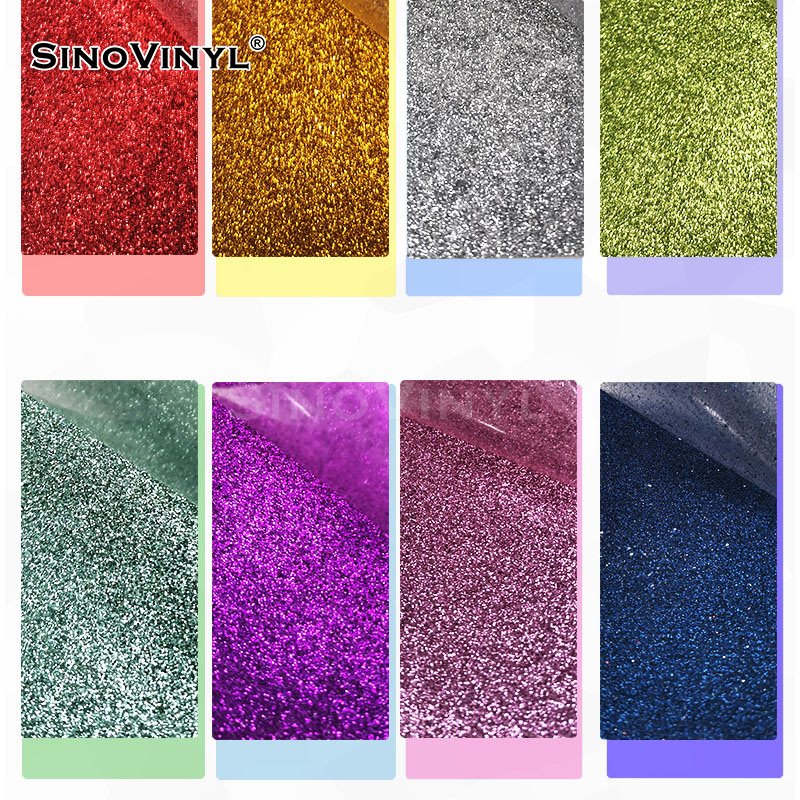
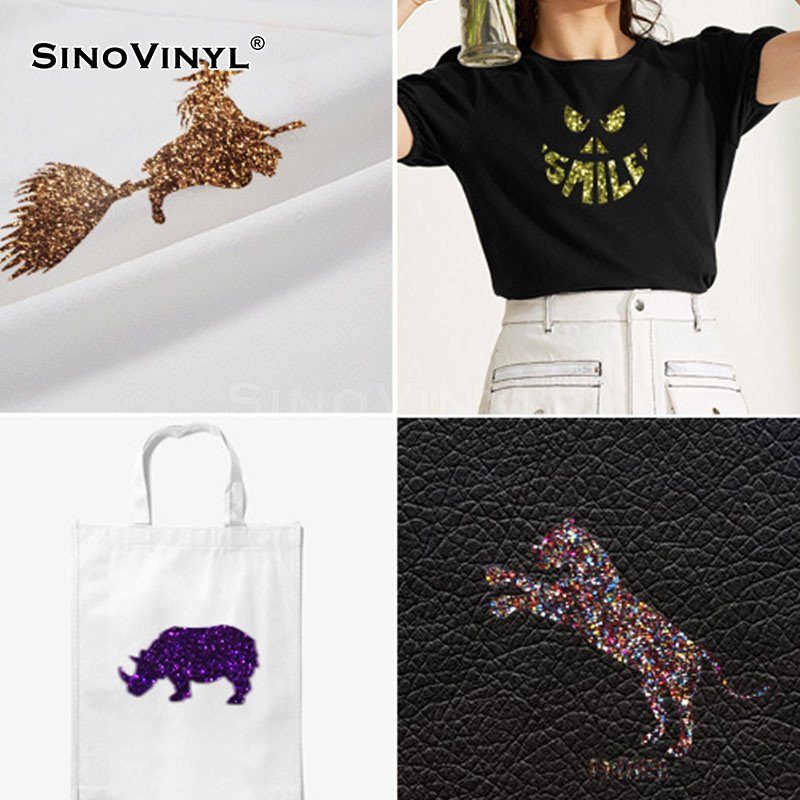

What are some considerations for selecting heat transfer vinyl colors that will stand out on different backgrounds?
Selecting the best right heat transfer vinyl (HTV) colors that stand out on different backgrounds is crucial to achieving visually appealing designs. Here are some considerations to keep in mind:
1. Contrast
Choose best heat transfer vinyl colors that offer strong contrast against the background material. High contrast makes the design elements pop and ensures better visibility. For instance, dark-colored HTV on light-colored backgrounds or vice versa tends to create a visually striking effect.
2. Color Wheel Principles
Refer to the color wheel to understand complementary and contrasting colors. Complementary colors are opposite each other on the color wheel and create a vibrant contrast. Contrasting colors, which are not complementary but still stand out, can also make your design more interesting.
3. Color Psychology
Consider the psychological impact of colors. Certain colors evoke specific emotions and associations. Choose colors that align with the message or mood you want to convey through your design.
4. Audience and Context
Think about your target audience and the context in which the design will be used. Colors should resonate with the preferences and expectations of your audience while being suitable for the purpose of the design.
5. Background Material and Finish
The type of fabric or material you’re applying HTV to can influence how the colors appear. Matte, glossy, or textured materials can impact color perception. Test your chosen colors on a small piece of the same material to ensure they stand out as desired.
6. Test Samples
Create test samples using various color combinations and backgrounds. This hands-on approach helps you see how the colors interact in real life and make adjustments if needed.
7. Simplicity vs. Complexity
Consider whether your design will have simple, bold elements or more intricate details. Depending on the complexity, you may need to balance the number of colors to avoid overwhelming the design.
8. Size of Design Elements
The size of the design elements matters. Smaller details may require colors with higher contrast to ensure they remain visible and don’t get lost in the background.
9. Lighting Conditions
Think about where your design will be seen. Different lighting conditions can affect how colors are perceived. Ensure that your chosen colors remain visible and effective in various lighting environments.
10. Brand Identity
If the design represents a brand or organization, consider its established color palette. Staying consistent with brand colors helps maintain recognition and cohesiveness.
11. Season and Theme
For seasonal or themed designs, consider using colors that resonate with the particular time of year or event. This can create a sense of relevance and connection with your audience.
12. Color Swatch References
Use color swatch references provided by HTV manufacturers. These references can guide you in selecting colors that are vibrant and designed to work well together.
Remember that while these considerations provide guidance, there’s also room for creativity and experimentation. Testing different color combinations on small scraps of material can give you a visual preview of how the colors will interact on the final product.
